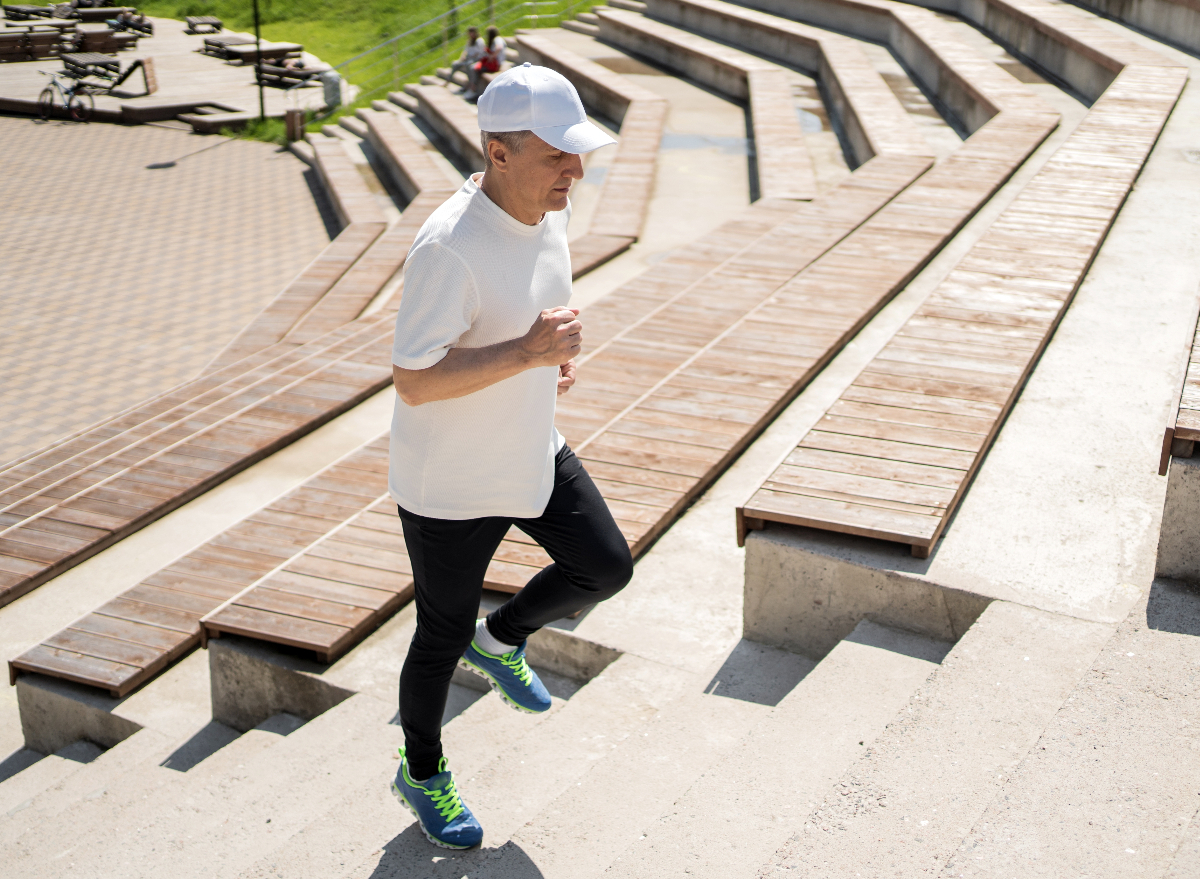7 Cardio Habits That Are Destroying Your Body After 50

Cardiovascular training is one of the best things you can do as you age—it boosts your mobility and flexibility, improves your endurance, and helps you sleep better, according to WebMD. Plus, getting in some cardio can even extend your life! But with the good, there's also the bad. Over time, cardio can limit your progress, puts unnecessary wear and tear on your joints, and can even make you feel worse. We've rounded up some of the worst cardio habits that destroy your body after 50, so read on to learn about them—and how to avoid them in order to thrive in your 50s and beyond.
1. You're training through pain or injuries.

This is a big no-no. While it's admirable to exercise "no matter what," always play the long-term game with fitness. If you have pain or injuries, take one step back so you can take two steps forward by resting and rehabbing. If you push through problems, however, you might make them much worse, which could lead to an even longer absence from training and worse physical condition.
2. You're not adding low-impact cardio.
Running, for example, is great cardio, but if you only run on pavement, it can be tough on your joints and tendons—especially if you're untrained and have poor technique.
Instead, it's far better for your muscles, joints, and overall progress to use a variety of methods to occasionally give your body a break while still improving your conditioning. Add methods like biking, swimming, hiking, or rowing into your weekly routine, and you'll feel the difference.
3. You're training too frequently.

It's great to exercise several times a week, but if you push every day—or sometimes twice a day—you're putting way too much stress on your body. As you age, your body recovers slower, so you need to manage your training frequency to give your muscles, joints, and ligaments a chance to recover and rebuild so you can come back feeling 100%.
4. You're too often pushing yourself to exhaustion.
You shouldn't push yourself to exhaustion every single time you train. Sure, it's fine to feel fatigued after a long workout, but if you do that every single time, you're putting far more stress onto your body than you can recover from.
5. You're skipping warm-ups and cool-downs.

When it comes to cardio, many people skip the warm-up and just go straight into the training. The problem, however, is you won't prepare your body to handle the physical activity, and you'll increase your chance of injuries, aches, or just all-around lousy performance.
Always do a thorough warm-up—especially if you're older. Then, when you finish training, stretch your muscles to improve your flexibility, which is critical in your 50s and beyond.
6. You're always using the highest intensity.
High-intensity training—pushing toward the highest end of your heart rate—has its value, but if you always train that way, you miss out on plenty more benefits. Low-intensity, long-duration training does wonders for your cardiovascular health without the strain of going all out.
High-intensity cardio, however, can also be very demanding. Only do it once or twice a week, and mix in lower-intensity training so you can improve your full spectrum of conditioning.
7. You're using bad technique.
Always use proper technique when doing cardio. Whether you're running or swimming, exercising with bad form can cause overuse injuries because you're putting a lot of repetitive stress on the wrong muscles and joints.
For example, running isn't merely "walking really fast"; it requires correct foot-striking, posture, footwear, cadence, and more. When in doubt, ask a coach to supervise your form so you can feel awesome for many years to come.









